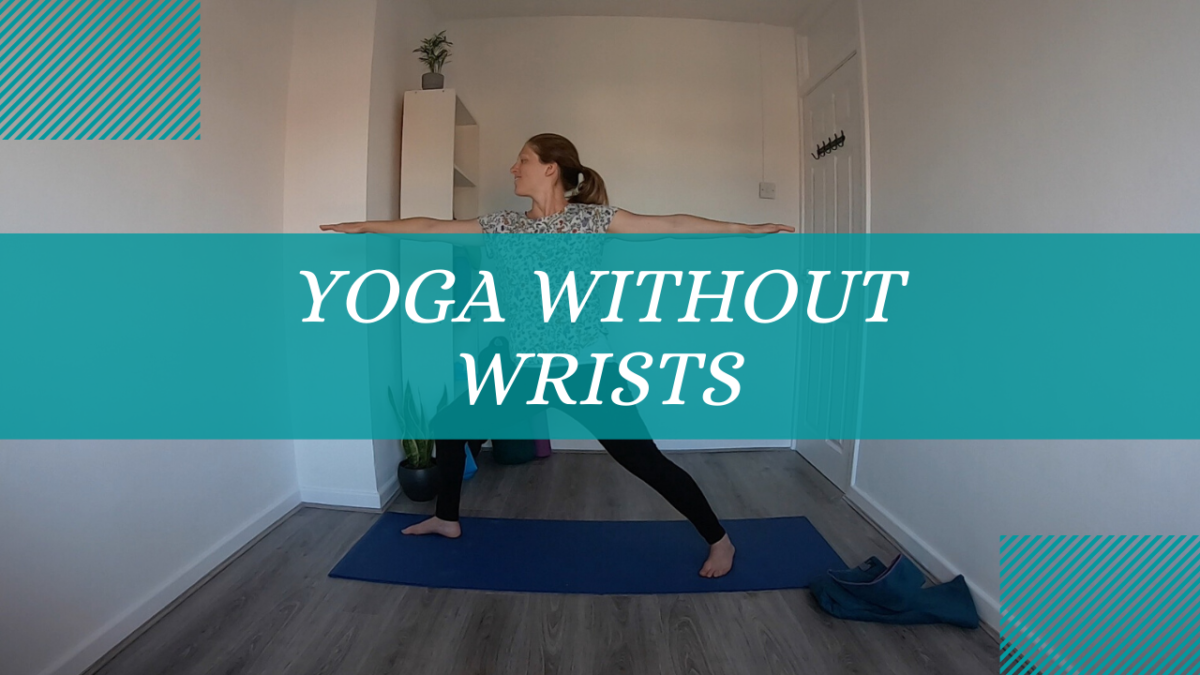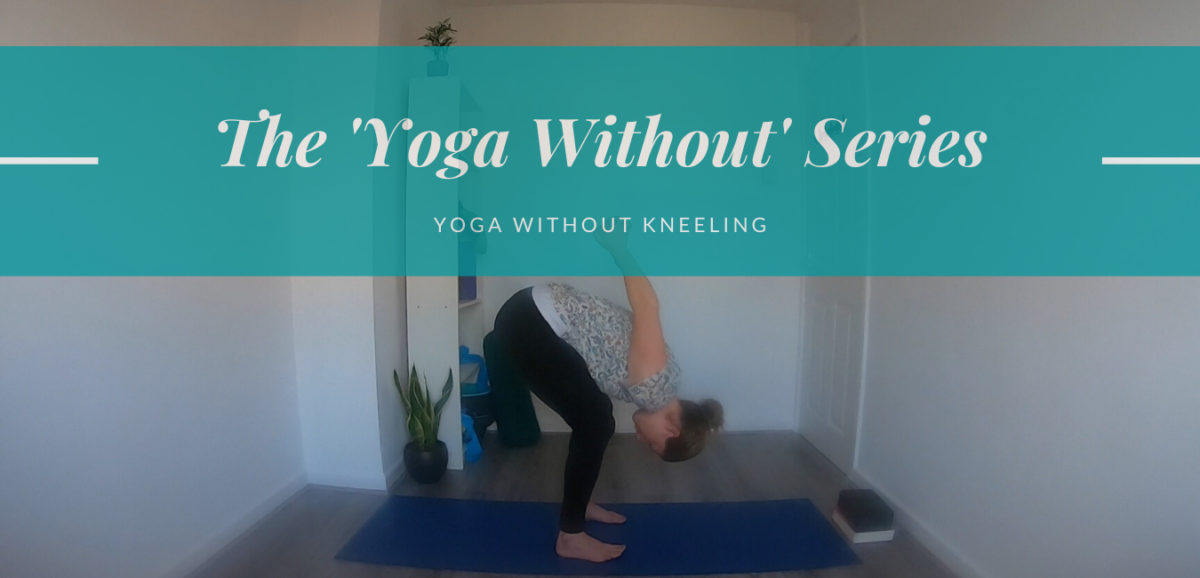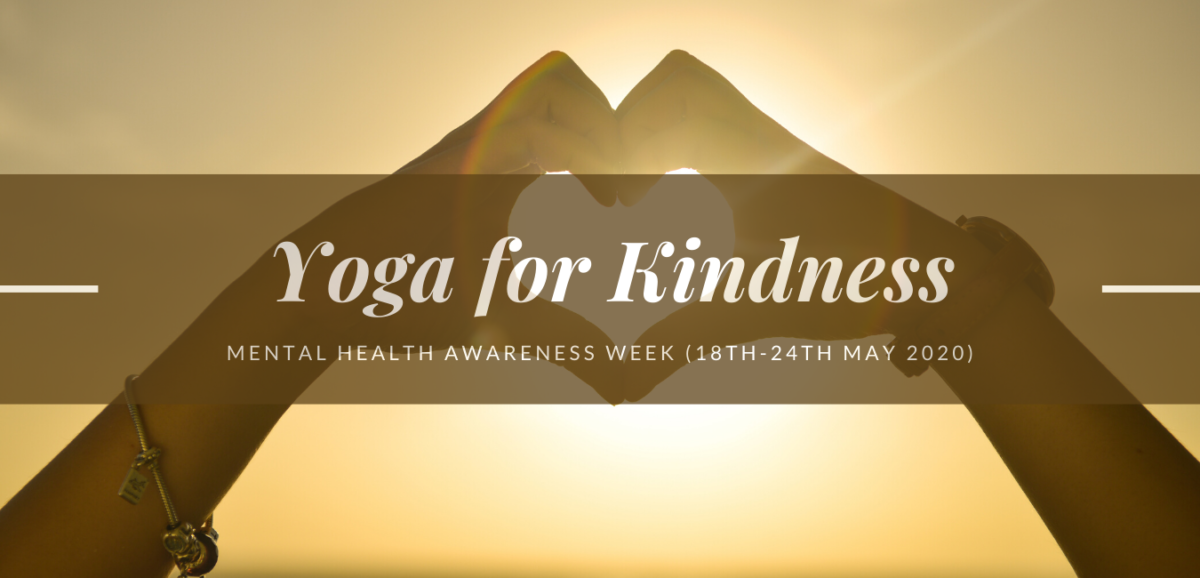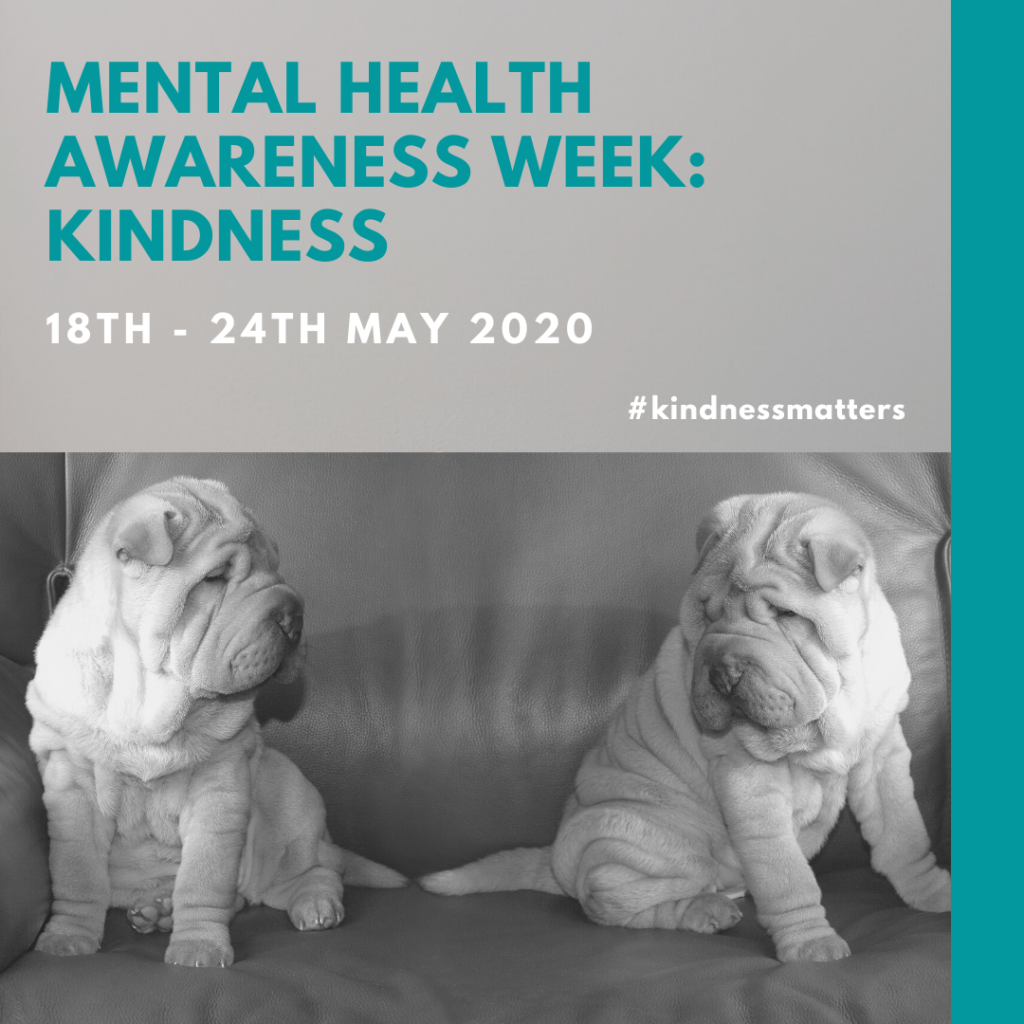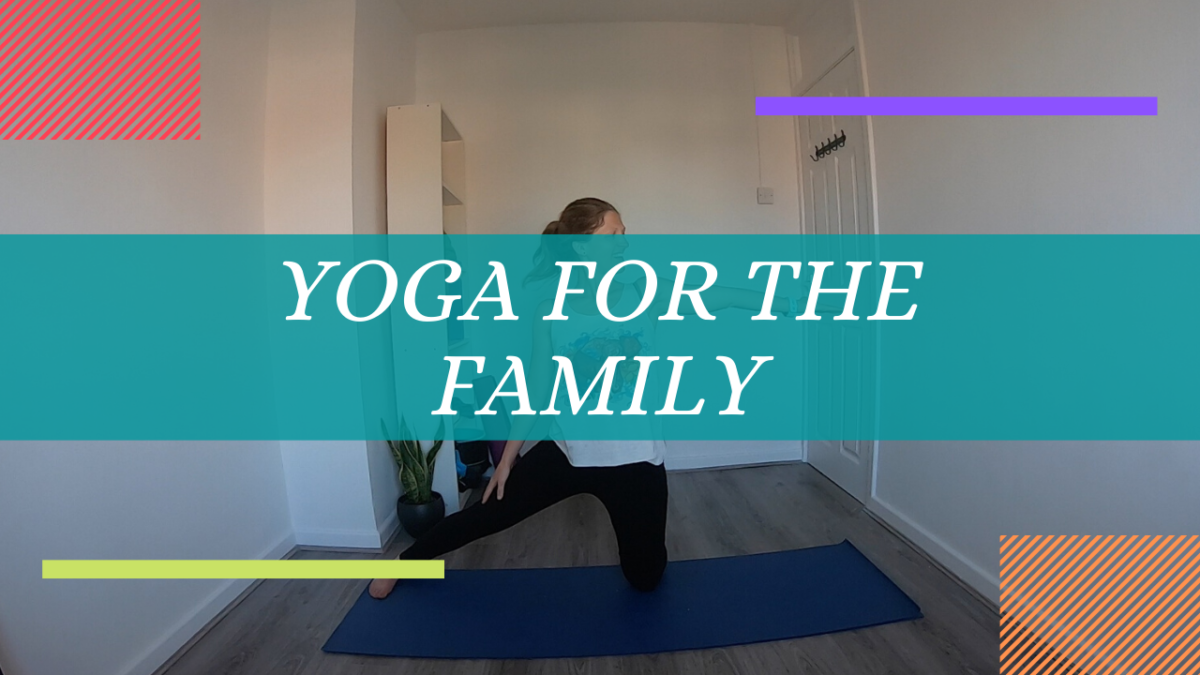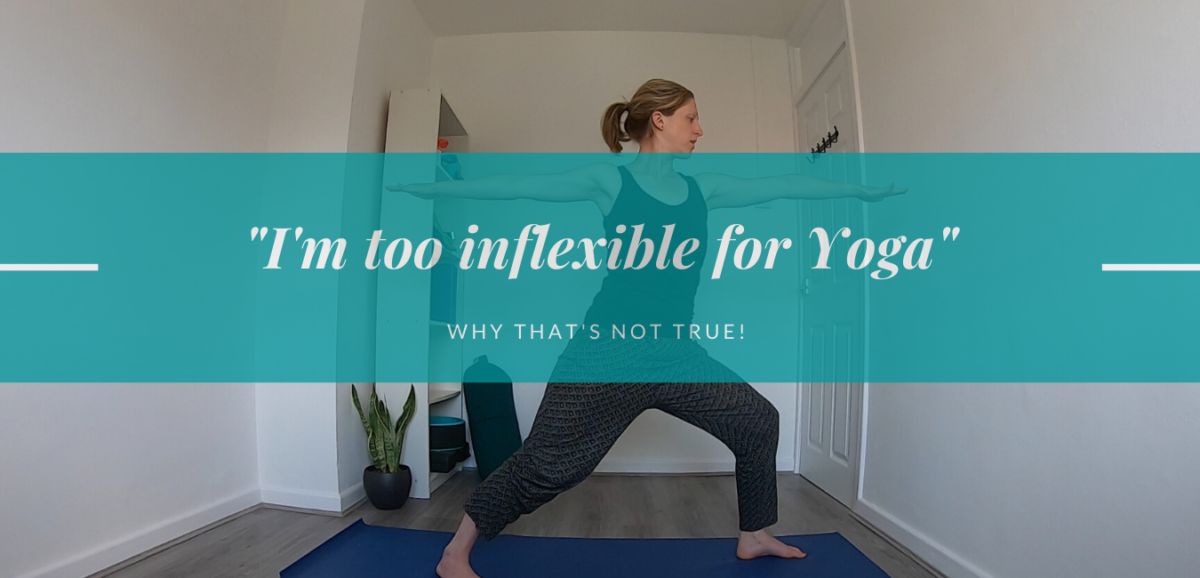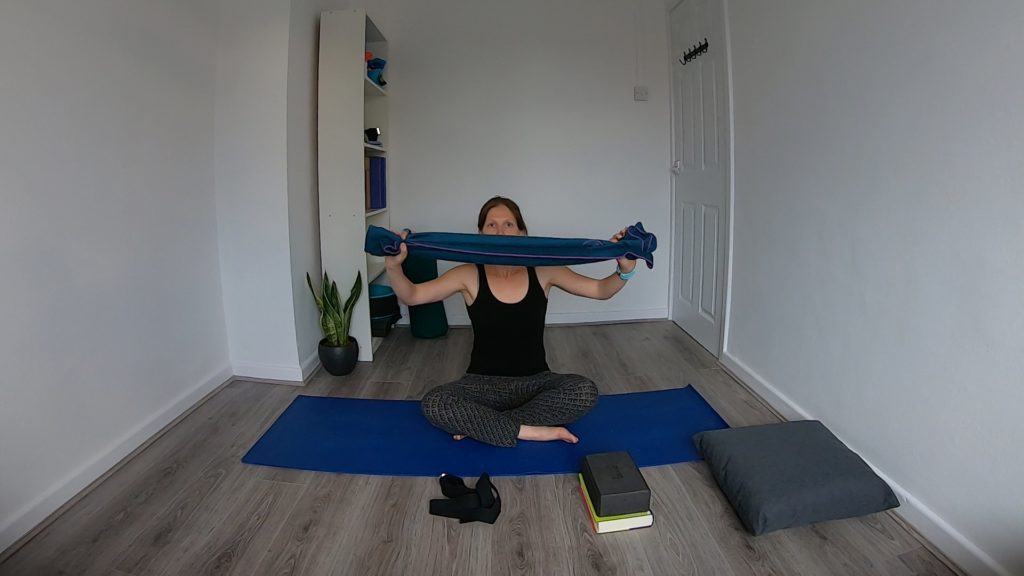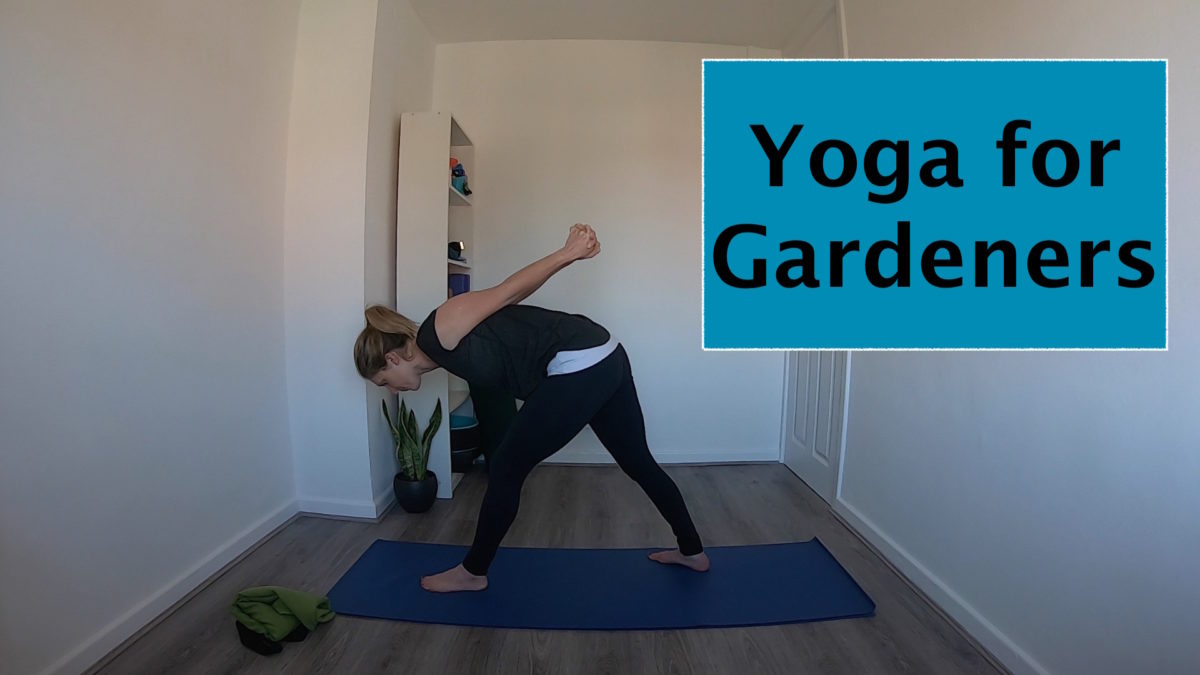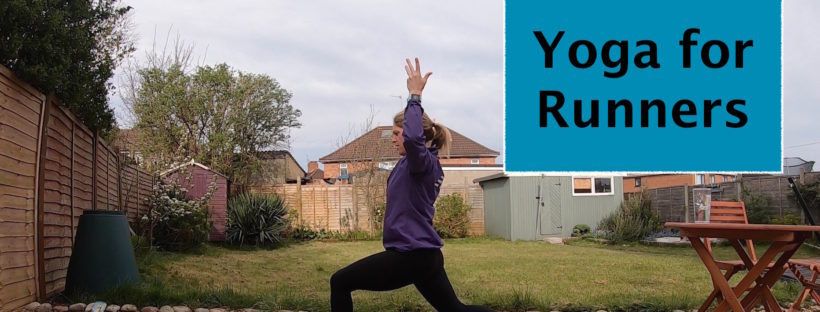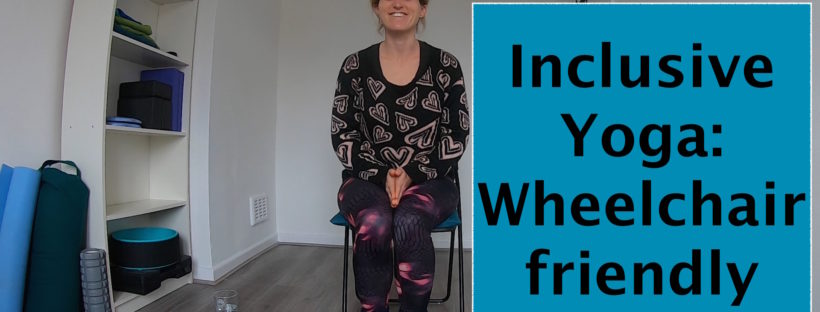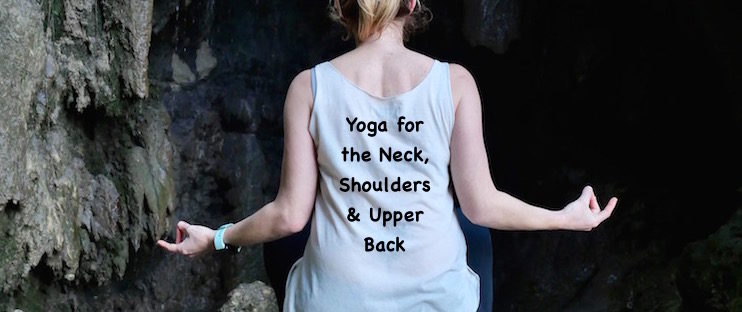Welcome to the second class of the ‘Yoga without’ Series. This is a 30 minute, beginner, Yoga without Wrists class.
During this class we won’t put any weight on the wrists. That means no downwards dogs and no arm balances. We still use the hands to help with balance and to guide the leg/ torso into the pose. If this isn’t accessible for you, you can use the forearms to do this instead and I’ll demonstrate this in the class.
I’ve also created a Supporting the Wrists in Yoga Mini Guide to help give you a bit more information and suggestions on how you can support your wrists during your yoga practice.
Props:
You can do this class with no props, however you might like to have a cushion or blanket to sit on (especially if you have tight hips). There is also an couple of options to use a rolled up blanket or yoga strap to assist you in the pose.
If you’d like more information on yoga props, you can check out the Beginners Yoga Guide, which has a section and short video on props.
Yoga Without Wrists Class
Yoga without Wrists Poses and Benefits
I thought I would share a bit more on a couple of the different poses we do during the class. And what the benefits are from doing these poses.
Deep Belly Breathing
Deep belly breathing fully utilises the diaphragm. This strengthens the diaphragm leading to more efficiency breathing.
The diaphragm also helps lymph in the lymphatic system move around the body. The lymphatic system is responsible for removing toxins from the body and replacing these toxins with nutrients. It doesn’t have a pump (ie. the heart) like blood in the circulatory system does. Lymph can only move around the body by gravity and muscular movement. The biggest and most important muscle being the diaphragm as this muscle creates a suction in the body, which helps move the lymph around the body. This suction only occurs when we fully utilise the diaphragm. Therefore, deep belly breathing can be quite detoxifying for the body.
Deep belly breathing also helps to relax the body, as it forces us to take slow, controlled breaths, instead of rapid breathing which lead to panic and for some, hyperventilation. It can also be used to lower our heart rate and blood pressure.
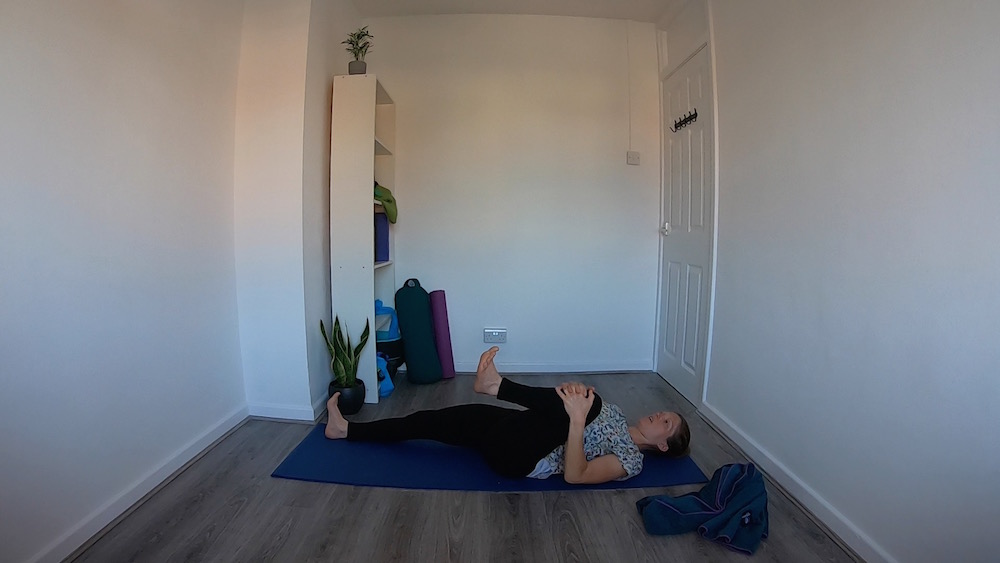
Seated Twist
If done correctly, gentle twists are great for waking up the spine and for removing any ‘kinks’ in the spine. To do this pose correctly, it’s important that the twist starts from the core and not from the shoulders. This helps to protect and warm up the spine safely and with the correct amount of pressure.
This gentle seated twists are also a nice way to open the rib cage and chest, as well as stretching the shoulders, hips, back and neck.
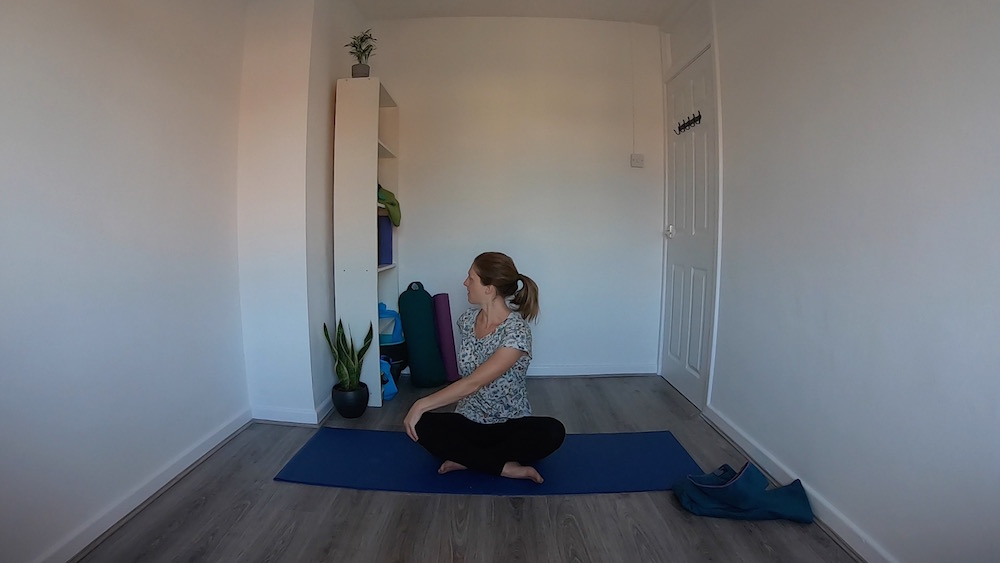
Virabhadrasana ii (Warrior 2)
Warrior 2 has a lot of different benefits. It opens up and stretches the hips, chest and groin. It also builds strength in the legs, ankle and arms. The pose helps to build stamina and endurance. It’s quite a strong pose, hence the pose name ‘Warrior’.
I’ve previously done a short Warrior class which explains the story of the Warriors, which you can check out here. Though in a nutshell the Warrior poses represent a Hindi story about Shiva
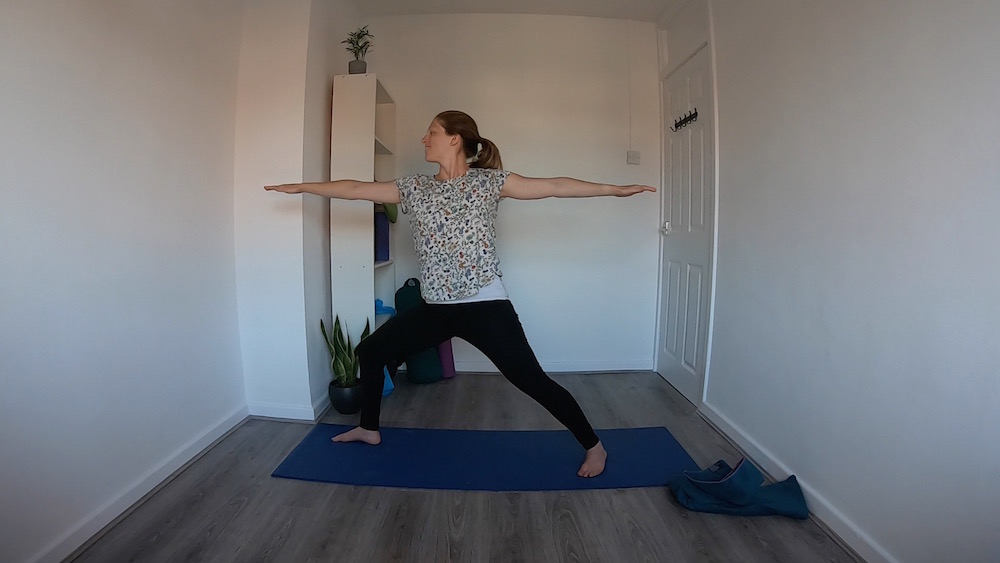
Apanasana variation (wind Relieving Pose)
This pose is great for stretching the hip flexors of the extended leg. It can also release tension in the lower back.
The bent knee creates a bit of compression on the core (stomach, intestines, kidneys region), this can stimulate the organs located in this area. Hence the translated name of the pose, ‘wind relieving pose‘, as the pose can aid in the digestion process.

Other classes in the series:
- Yoga without kneeling
- Yoga without using arms
- Yoga without inversions
- Yoga without forward bends
- Yoga without shoulders
If you would like more the first class in the series, Yoga without Kneeling, also doubles up as a ‘Yoga without Wrists’ class. So check that out if you like.

